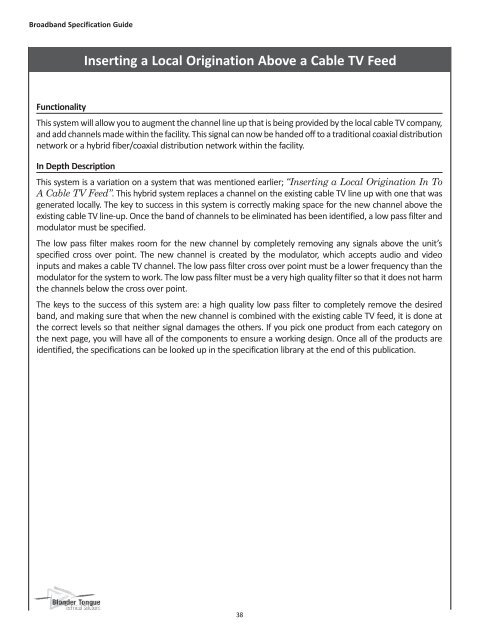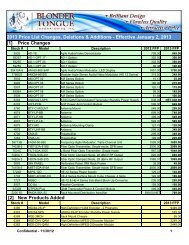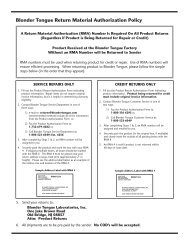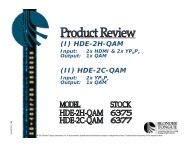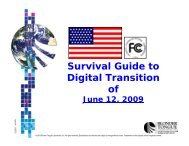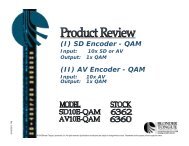Functional Block Diagram - Blonder Tongue Laboratories Inc.
Functional Block Diagram - Blonder Tongue Laboratories Inc.
Functional Block Diagram - Blonder Tongue Laboratories Inc.
Create successful ePaper yourself
Turn your PDF publications into a flip-book with our unique Google optimized e-Paper software.
Broadband Specification Guide<br />
Inserting a Local Origination Above a Cable TV Feed<br />
<strong>Functional</strong>ity<br />
This system will allow you to augment the channel line up that is being provided by the local cable TV company,<br />
and add channels made within the facility. This signal can now be handed off to a traditional coaxial distribution<br />
network or a hybrid fiber/coaxial distribution network within the facility.<br />
In Depth Description<br />
This system is a variation on a system that was mentioned earlier; “Inserting a Local Origination In To<br />
A Cable TV Feed”. This hybrid system replaces a channel on the existing cable TV line up with one that was<br />
generated locally. The key to success in this system is correctly making space for the new channel above the<br />
existing cable TV line-up. Once the band of channels to be eliminated has been identified, a low pass filter and<br />
modulator must be specified.<br />
The low pass filter makes room for the new channel by completely removing any signals above the unit’s<br />
specified cross over point. The new channel is created by the modulator, which accepts audio and video<br />
inputs and makes a cable TV channel. The low pass filter cross over point must be a lower frequency than the<br />
modulator for the system to work. The low pass filter must be a very high quality filter so that it does not harm<br />
the channels below the cross over point.<br />
The keys to the success of this system are: a high quality low pass filter to completely remove the desired<br />
band, and making sure that when the new channel is combined with the existing cable TV feed, it is done at<br />
the correct levels so that neither signal damages the others. If you pick one product from each category on<br />
the next page, you will have all of the components to ensure a working design. Once all of the products are<br />
identified, the specifications can be looked up in the specification library at the end of this publication.<br />
38


